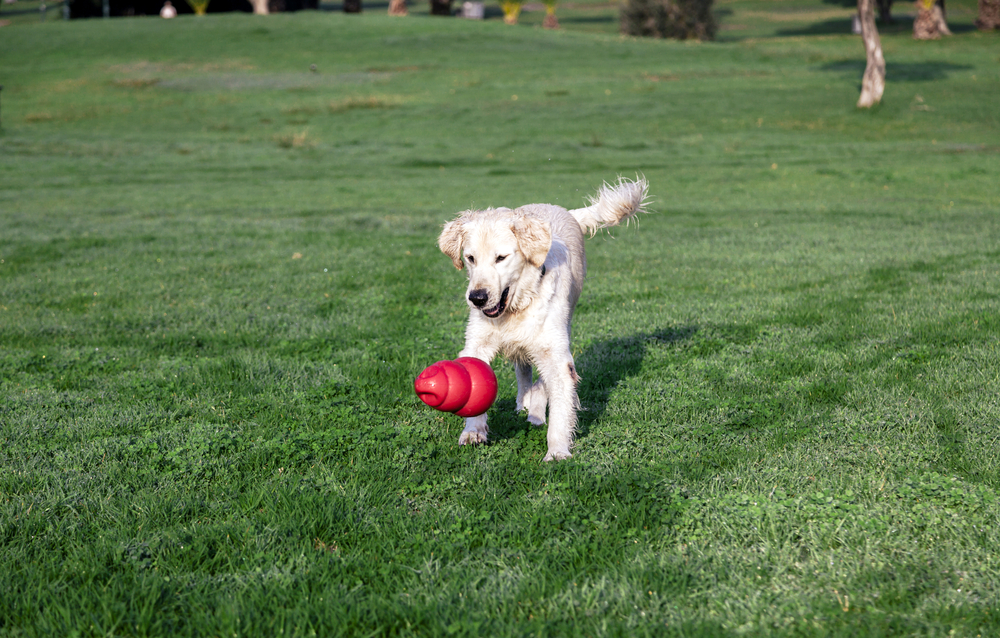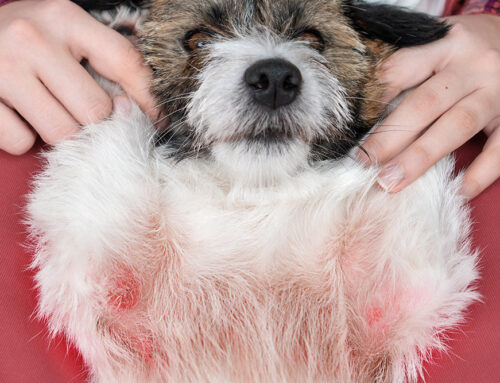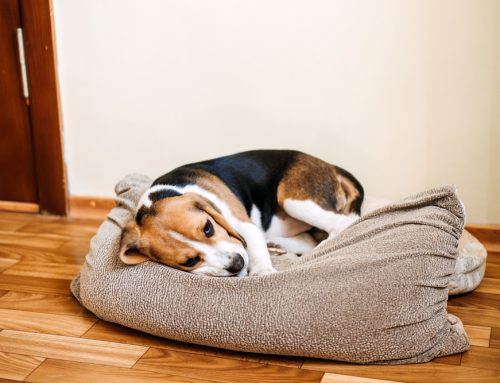The pet store associate promised your dog would get “hours of enjoyment” from the $20 bone, but—much like children—they had more fun playing with the empty grocery delivery box.
Searching for the perfect dog chew can be a Holy Grail-quest for nosh Nirvana. Finding a toy that is safe, healthy, appropriate for your dog’s chewing style, and more appealing than a cardboard box can seem not only almost impossible, but also expensive. Fortunately, Willow Wood Animal Hospital knows the ins and outs of some of the greatest dog chews and chew treats available. Our team shows you how to select a safe—and tasty—treat for your pet.
Chew toy hazards for dogs
It’s all fun and games, until your dog’s new toy causes an unexpected trip to Willow Wood Animal Hospital. While no toy or treat is 100 percent safe for all dogs, inappropriate chew toy selection can result in:
- Choking — Dogs can swallow whole small chews, or break off, swallow, and choke on large, unchewed pieces.
- Vomiting and diarrhea — High-fat chews may cause gastrointestinal upset, or pancreatitis.
- Oral damage — Bones and hooves can be split and sheared, creating jagged edges that lacerate gum tissue, or puncture the esophagus.
- Dental fracture — Solid chews and bones that come with claims they will “entertain your dog for hours,” often do not yield to jaw pressure, and commonly cause painful tooth fractures.
- Gastrointestinal obstruction — Indigestible pieces can become lodged anywhere in the dog’s gastrointestinal tract, requiring surgical removal.
Dangerous chew toys and treats for dogs
Because of their long and harmful history, Willow Woods Animal Hospital strongly advises against feeding the following chews and treats to your dog:
- Raw or cooked bones (e.g., femurs, marrow bones, knuckles)
- Antlers
- Hooves
- Rawhide
- Pigs’ ears
- Synthetic chews (e.g., Nylabone, Benebone)
- Yak’s milk chews
Selecting an appropriate chew toy for your dog
When we evaluate a chew toy or treat for safety and health, we compare it against the following criteria:
- Does the chew surface have any give? — When we press a fingernail against the chew, we want to see an indentation, which tells us the material will yield slightly to the dog’s tooth.
- What is the chew density? — If hitting our knee or elbow with the chew would hurt, the item is too hard for a dog’s mouth.
- Is the chew flexible? — If we try to bend the chew, will it flex slightly? A good chew will move with the jaw, and not be rigid.
- Are several sizes available? — Large dogs and aggressive chewers may choke on small toys, while large chews can be too high in calories for small dogs.
- Bonus question: Does the product carry the Veterinary Oral Health Council (VOHC) Seal? — Products with the VOHC seal have met specific efficacy standards (i.e., successful clinical trials) for preventing plaque and tartar accumulation. Daily VOHC treats and chews are helpful for dogs who do not tolerate toothbrushing.
Ensuring a safe chewing experience for your dog
If a chew toy or treat passes our testing, a few precautions are still necessary to ensure a safe chewing experience:
- Separate pets — Chews may be seen as valuable resources. Ensure pets are separated before providing chew toys or treats.
- Observe your dog — Dogs should always be supervised while chewing. Ensure pieces are thoroughly chewed before swallowing.
- Offer a fair trade — Never take a chew from your dog’s mouth. Instead, offer an irresistible treat reward that you toss a short distance away. When your dog moves toward the treat, remove the dropped chew.
Appropriate chew toys and treats for dogs

Time for treats! The following chew toys and treats meet or exceed our safety and health criteria. As always, supervise your dog during play, to ensure appropriate and safe behavior—after all, dogs will be dogs.
- Kong or West Paw toys —Dogs love these flexible rubber and plastic toys for their satisfying bite, give, and bounce. Hollow options, such as the regular Kong and Toppl, can be filled with wet ingredients and food, and used as a slow feeder, or a distraction during thunderstorms and holidays, or while your pet is crated. Kongs come in various strengths, including puppy, senior, and Kong Extreme for power chewers.
- C.E.T. Chews — C.E.T. Veggie Dent and C.E.T. Hextra are VOHC-approved edible dental chews formulated to remove plaque and tartar, and freshen breath. Both styles provide gentle abrasion to the tooth’s surface.
- Greenies Dental Chews — Iconic Greenies are a perennial favorite for their flexible, gummy texture, and highly digestible ingredients. For a longer-lasting experience, insert Greenies in a treat holder, such as the Quizl or Goodie Bone.
- Healthy fruits and vegetables — Pet-safe produce can make satisfying and nutritious treats. Try freezing whole carrots, green beans, cubed watermelon, or strawberries. Apples can be cored—ensuring you remove all the seeds, which are toxic—and filled with xylitol-free peanut butter for an “edible Kong.” Fruits have a high-sugar content, so give these treats sparingly.
- Destruction boxes — For dogs who prefer to shred, tear, and destroy, cardboard destruction or busy boxes are a fun, satisfying, safe way to burn energy.
When giving your pet a chew toy or treat, adjust their daily meals to reflect any additional calories consumed, to prevent unintended weight gain. If you notice any abnormal behavior while your pet is chewing, such as drooling, bleeding gums, or pawing at the mouth, schedule an appointment with Dr. Whitman, Hess or Connolly at Willow Wood Animal Hospital.







Leave A Comment